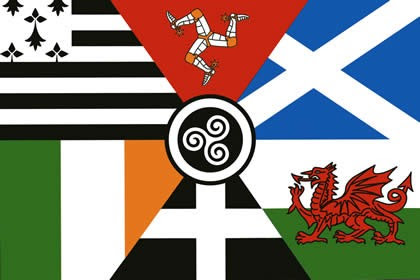"Since the beginning of confinement, the Breton language has been confined to the social networks of the audiovisual public service, namely France Bleu Breizh Izel and France 3 Bretagne," deplores in a press release the Finistère federation of the Democratic Breton Union, UDB, regretting this absence.
skip to main |
skip to sidebar
Just two words, “laoch áitiúil” pay tribute to the life of a priest, Land League activist, and Gaelic scholar regarded as a pioneer of modern Irish language literature. The understatement of the newly-inscribed plaque in the Cork church where An tAthair Peadar Ó Laoghaire was baptised and received his first Communion and Confirmation, is deliberate.
The author of Séadna, Mo Scéal Féin, and Tadhg Saor, the first play published in Irish, has been the subject of numerous biographical and scholarly studies since his death 100 years ago. In his home parish, An tAthair Peadar’s literary fame stands alongside his leadership as a priest and champion of farmers’ rights as deserving of the epitaph of local hero, laoch áitiúil.
Centenary celebrations in the mid-Cork village of Carriganima, where An tAthair Peadar attended school and church, fell victim to Covid-19 restrictions. But providing a lasting testament to the esteem in which the farmer’s son is held 181 years after his birth, is a new book reflecting both his legacy and the life of the people of his native parish during the last century.
Edited by local historian James O’Leary, Ár Scéal Féin, its title a tribute to An tAthair Peadar’s autobiographical work, tells in fact, folklore, and photographs the story of a community, much of it though “caint na ndaoine”, the spoken Múscraí Irish for which the priest’s work is famed.
An tAthair Peadar, says O’Leary, “spent his life helping the ordinary people”. Ordained in 1867 and made a canon in 1906, he served in the Cloyne Diocese, including in Kilshannig, Kilworth, and Rathcormac, before being appointed parish priest in Castlelyons. There, he wrote the story of the shoemaker Séadna, which became a fixture on the school curriculum.
Though as a centenary celebration “everything else went by the wayside”, Ár Scéal Féin/Our Own Story: From Carriganima to Castlelyons “will always be there”, says O’Leary, for whom the book was a project close to his heart.
“I didn’t consider it work; I considered it a duty, as the proper way to commemorate a man who was the first who wrote in caint na ndaoine, the language of the people. Before that it was classical Irish,” he says. Though he contends that an tAthair Peadar “was looked down upon by the intelligentsia at the time because he was writing in caint na ndaoine”, it was his use of the vernacular that helped put Munster Irish “at the forefront” of Irish language literature during the Gaelic revival of the late 19th Century. At the time, the promotion of the language by contemporaries such as Dr Dónal Ó Loingsigh led Pádraig Pearse to refer to Baile Mhúirne, near Ó Laoghaire’s birthplace in Liscarrigane, as “the principal city of the Gaeltacht”.
Although he did not begin writing in earnest until his 50s, upon the foundation of Conradh na Gaeilge, An tAthair Peadar completed more than 500 pieces of work including essays, stories, and translations of The Bible and Don Quixote, before his death in 1920 in Castlelyons, where he is buried.
His contribution to Irish language literature saw him honoured as a freeman of both Dublin and Cork, with Cork Corporation describing him as “the greatest Irish writer of his age” when granting him the freedom of the city in 1912.
A year later, an tAthair Peadar told an audience at the opening of Coláiste na Nua Ghaeilge: “Do not bother yourselves with Old Irish. It is not in any danger. It is in the old books and can be got from them, when anybody wants to do so. Turn instead to the Irish that is alive. The old people are taking it with them to the grave.” His exhortation, and use of spoken Irish as a basis for literature, has resonance in Ár Scéal Féin, whose Irish and English texts give voice to the ordinary person, recounting the customs and folklore of rural Ireland.
One of the book’s legacies is likely to be its inclusion of stories collected by national school pupils in the villages of Carriganima, Clondrohid, and Muinefliuch during the 1930s for the Irish Folklore Commission.
“If nothing else comes of the book, that heritage has now been unlocked within the community,” says O’Leary, who invited the schools’ current pupils to select local folklore entries from Duchas.ie for Ár Scéal Féin.
“The teachers told me they hadn’t met anything in all their years teaching that had such an effect on [the pupils] because they went home and spoke to their parents, and their parents knew the people that had written the stories. They learnt about their own heritage,” he adds.
Another contributor to the 1930s schools collection was Nóra Ní Chríodáin, then a pupil of Scoil Barr d’Inse, who as Nóra Uí Scanaill after marriage lived in Liscarrigane, yards from Laoghaire’s homeplace.
Among the items reproduced in her original handwriting in Ár Scéal Féin are accounts of landlords’ rent collection and the hardships of farming life, which are comparable to those told by an tAthair Peadar, says O’Leary, describing their discovery as “like gold dust”.
A Land League proponent, as detailed in Mo Scéal Féin, An tAthair Peadar “was a man who stood for the ordinary tenant farmer,” says O’Leary. He draws modern parallels, in Ár Scéal Féin, with the 1850s land reform demands of fair rent, free sale, and fixity of tenure, describing An tAthair Peadar as “the spiritual leader of the Land League”.
O’Leary, a distant relative of the scholar, includes in the book his own research on an extended Ó Laoghaire family tree stretching to 80 first cousins.
“I tried to pay tribute to the man, the writer, and the priest,” he adds. “The book was the only way we could commemorate him properly for what he had done for both the Irish people and the Irish language.”
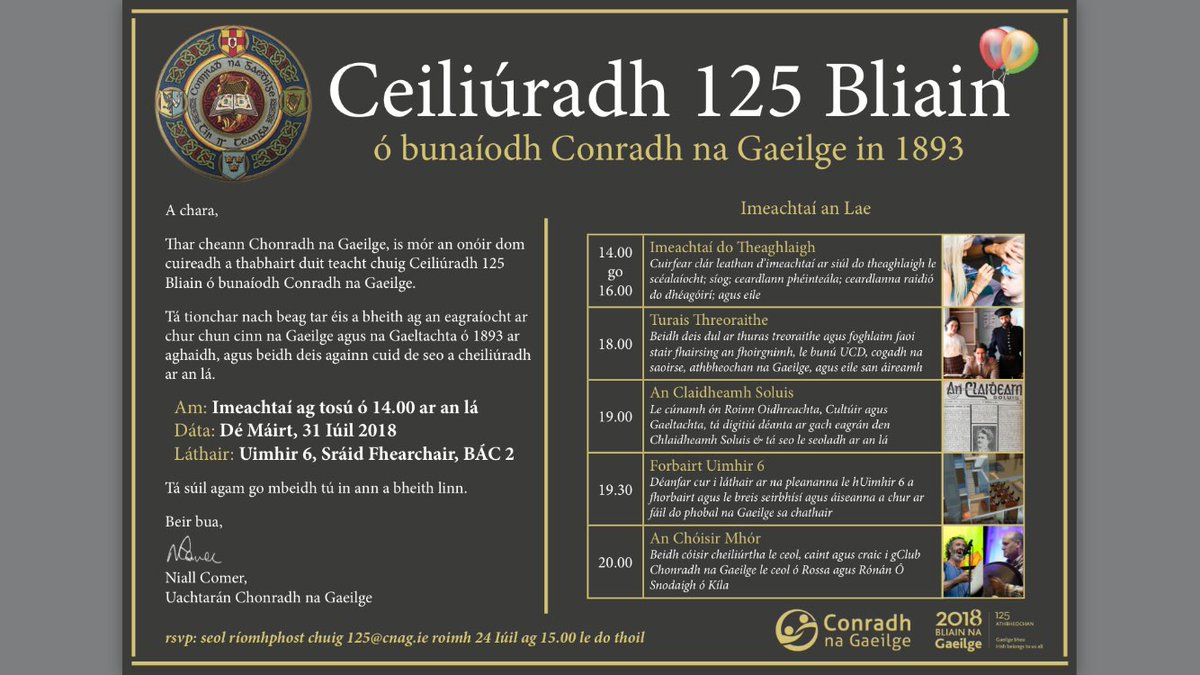

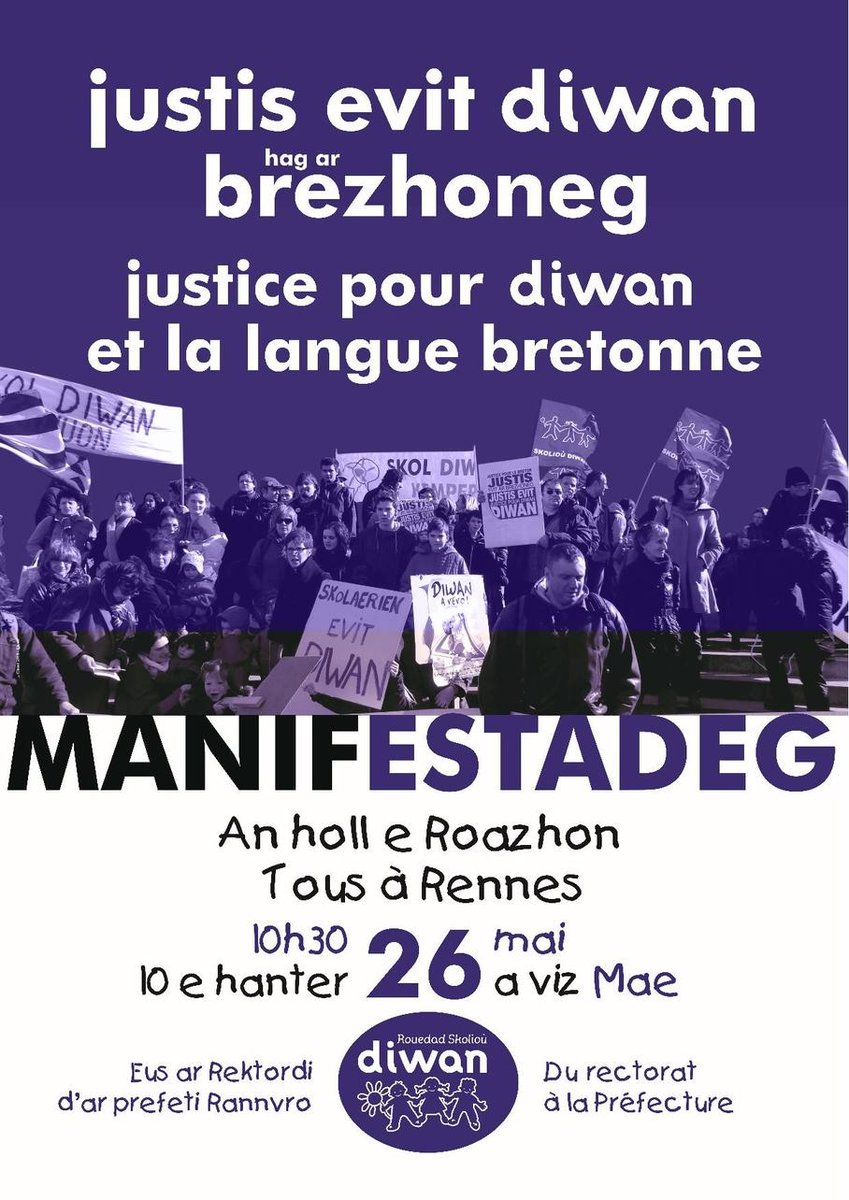
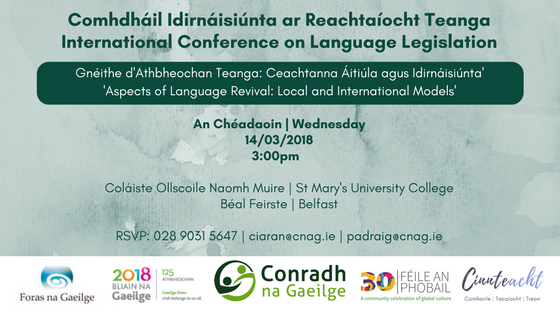
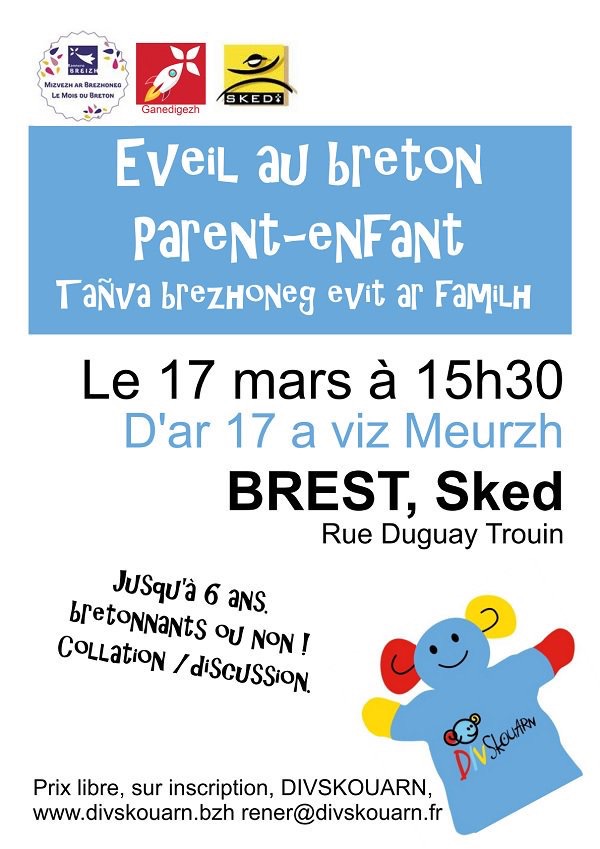
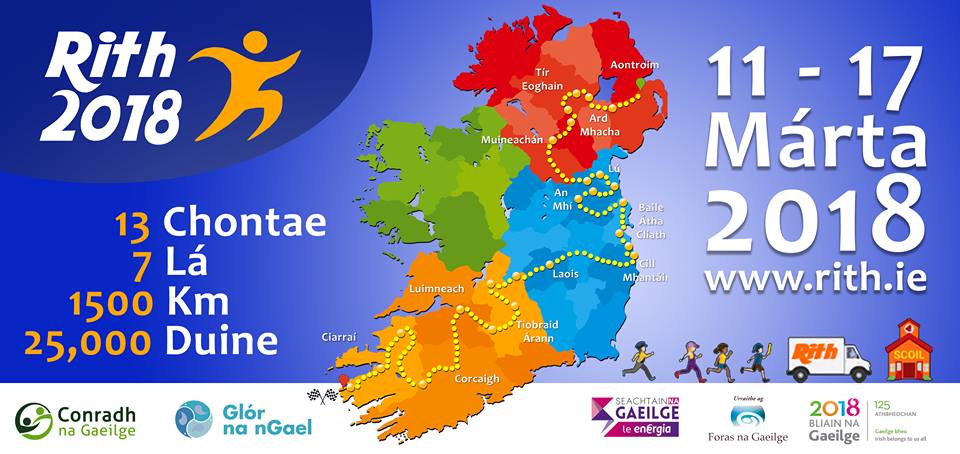
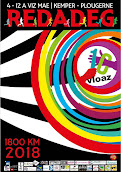


Celtic Languages News
Most Read
-
Last year, they were 15. This year, they are 14 candidates for the baccalaureate of Diwan high school in Carhaix, Finistere, to have wr...
-
The first ever television chat show in the Cornish language has been launched. Two pilot episodes of 'Jaqi ha Jerry' have been made...
-
Stumdi organized an employment forum in Breton language (Forom an implic e brezhoneg) on Wednesday, March 21st, 2018 at the Le Family cult...
-
Children are getting their first taste of the Manx language with a new book. ’ A Manx Alphabet’ is designed to engage young children look...
-
The first female MSP to make a plenary address in the Scottish Parliament chamber in Gaelic has warned the language’s future will only ...
-
We have available each of the Celtic flags in 60 x 90 size as well as other sizes. Please write to: nsestat@gmail.com Ireland/Eire ...
-
Deputy First Minister, John Swinney MSP officially opened Bun-sgoil Ghàidhlig Phort Rìgh in September. Support given to Highland Council by ...
-
45 schools in Galway are to benefit from almost 1.5 million euro in funding under the Irish Language Assistants Scheme. The new funding com...
-
Young Gaelic speakers have a duty to pass on the language to the next generation, according to SNP MSP Kate Forbes. Ms Forbes made the c...
-
Steph Norman and Aaron Willoughby have been told they must have their wedding ceremony in English first. Steph Norman and Aaron Willoughb...
2020/05/18
2020/05/17
How to donate to Manx Gaelic pre schools Mooinjer Veggey
Since
its inception in 1996, Mooinjer Veggey (Little People) has been
successfully promoting Manx Gaelic, through its network of pre-school
groups across the Island and its support of the only Manx language
school - Bunscoill Ghaelgagh. But it now needs your help to raise more
money to enable the organisation to fund its goal of training further
staff and production of Manx resource material.
Mooinjer Veggey is an educational charity, run by a voluntary committee, with Manx language nurseries established in Braddan and Ballasalla - where children learn the Island's native tongue through songs and rhymes. Additionally, a Manx language 'parents and tots' group (Possan Cloie) meet in St John's during term time.
The aim of Mooinjer Veggey is to provide an education with, or through the Manx language, giving children an acknowledged advantage of learning a second language at an early age. Learning Manx (at any age) helps to create a sense of place and belonging and develop an interest in other languages. It can also be both empowering and exciting, but also fun!
It's possible to become a member of Caarjyn Vooinjer Veggey (Friends of Mooinjer Veggey) for a minimum donation of £10 per year, which in turn helps to support the vital work undertaken by Mooinjer Veggey itself. Members will also receive regular newsletters, updating them on progress within the group. Further details about the organisation and how to donate available on their website. https://www.mooinjerveggey.org.im
Mooinjer Veggey is an educational charity, run by a voluntary committee, with Manx language nurseries established in Braddan and Ballasalla - where children learn the Island's native tongue through songs and rhymes. Additionally, a Manx language 'parents and tots' group (Possan Cloie) meet in St John's during term time.
The aim of Mooinjer Veggey is to provide an education with, or through the Manx language, giving children an acknowledged advantage of learning a second language at an early age. Learning Manx (at any age) helps to create a sense of place and belonging and develop an interest in other languages. It can also be both empowering and exciting, but also fun!
It's possible to become a member of Caarjyn Vooinjer Veggey (Friends of Mooinjer Veggey) for a minimum donation of £10 per year, which in turn helps to support the vital work undertaken by Mooinjer Veggey itself. Members will also receive regular newsletters, updating them on progress within the group. Further details about the organisation and how to donate available on their website. https://www.mooinjerveggey.org.im
2020/05/14
Duolingo's Scottish Gaelic course a right old barnstorming success: 300,000 people are signed up to the smartphone module
Duolingo's launch of a Scottish Gaelic learning course would appear to
have been a right old barnstorming success, as it says around 300,000
people are currently signed up to the smartphone language module.
Oddly enough it's not Scots powering the Gaelic wave, as stats from the language app show that more users on the course are based in the US (35 per cent) than the UK (34 per cent). The 300,000 number marks quite a roaring interest, as the most recent census data showed 57,375 Scots claiming to be able to speak Gaelic, so having 300k more rock up with their brave attempts at pronunciation is a massive surge of interest.
Colin Watkins from Duolingo says the app will be updating soon with more Gaelic content, for your mind-expanding lockdown thrills and future interactions with the elderly locals when and if holidaying in the more rural bits of Scotland.
Oddly enough it's not Scots powering the Gaelic wave, as stats from the language app show that more users on the course are based in the US (35 per cent) than the UK (34 per cent). The 300,000 number marks quite a roaring interest, as the most recent census data showed 57,375 Scots claiming to be able to speak Gaelic, so having 300k more rock up with their brave attempts at pronunciation is a massive surge of interest.
Colin Watkins from Duolingo says the app will be updating soon with more Gaelic content, for your mind-expanding lockdown thrills and future interactions with the elderly locals when and if holidaying in the more rural bits of Scotland.
2020/05/12
An tAthair Peadar Ó Laoghaire: New book pays tribute to Gaelic scholar
The author of Séadna, Mo Scéal Féin, and Tadhg Saor, the first play published in Irish, has been the subject of numerous biographical and scholarly studies since his death 100 years ago. In his home parish, An tAthair Peadar’s literary fame stands alongside his leadership as a priest and champion of farmers’ rights as deserving of the epitaph of local hero, laoch áitiúil.
Centenary celebrations in the mid-Cork village of Carriganima, where An tAthair Peadar attended school and church, fell victim to Covid-19 restrictions. But providing a lasting testament to the esteem in which the farmer’s son is held 181 years after his birth, is a new book reflecting both his legacy and the life of the people of his native parish during the last century.
Edited by local historian James O’Leary, Ár Scéal Féin, its title a tribute to An tAthair Peadar’s autobiographical work, tells in fact, folklore, and photographs the story of a community, much of it though “caint na ndaoine”, the spoken Múscraí Irish for which the priest’s work is famed.
An tAthair Peadar, says O’Leary, “spent his life helping the ordinary people”. Ordained in 1867 and made a canon in 1906, he served in the Cloyne Diocese, including in Kilshannig, Kilworth, and Rathcormac, before being appointed parish priest in Castlelyons. There, he wrote the story of the shoemaker Séadna, which became a fixture on the school curriculum.
Though as a centenary celebration “everything else went by the wayside”, Ár Scéal Féin/Our Own Story: From Carriganima to Castlelyons “will always be there”, says O’Leary, for whom the book was a project close to his heart.
“I didn’t consider it work; I considered it a duty, as the proper way to commemorate a man who was the first who wrote in caint na ndaoine, the language of the people. Before that it was classical Irish,” he says. Though he contends that an tAthair Peadar “was looked down upon by the intelligentsia at the time because he was writing in caint na ndaoine”, it was his use of the vernacular that helped put Munster Irish “at the forefront” of Irish language literature during the Gaelic revival of the late 19th Century. At the time, the promotion of the language by contemporaries such as Dr Dónal Ó Loingsigh led Pádraig Pearse to refer to Baile Mhúirne, near Ó Laoghaire’s birthplace in Liscarrigane, as “the principal city of the Gaeltacht”.
Although he did not begin writing in earnest until his 50s, upon the foundation of Conradh na Gaeilge, An tAthair Peadar completed more than 500 pieces of work including essays, stories, and translations of The Bible and Don Quixote, before his death in 1920 in Castlelyons, where he is buried.
His contribution to Irish language literature saw him honoured as a freeman of both Dublin and Cork, with Cork Corporation describing him as “the greatest Irish writer of his age” when granting him the freedom of the city in 1912.
A year later, an tAthair Peadar told an audience at the opening of Coláiste na Nua Ghaeilge: “Do not bother yourselves with Old Irish. It is not in any danger. It is in the old books and can be got from them, when anybody wants to do so. Turn instead to the Irish that is alive. The old people are taking it with them to the grave.” His exhortation, and use of spoken Irish as a basis for literature, has resonance in Ár Scéal Féin, whose Irish and English texts give voice to the ordinary person, recounting the customs and folklore of rural Ireland.
One of the book’s legacies is likely to be its inclusion of stories collected by national school pupils in the villages of Carriganima, Clondrohid, and Muinefliuch during the 1930s for the Irish Folklore Commission.
“If nothing else comes of the book, that heritage has now been unlocked within the community,” says O’Leary, who invited the schools’ current pupils to select local folklore entries from Duchas.ie for Ár Scéal Féin.
“The teachers told me they hadn’t met anything in all their years teaching that had such an effect on [the pupils] because they went home and spoke to their parents, and their parents knew the people that had written the stories. They learnt about their own heritage,” he adds.
Another contributor to the 1930s schools collection was Nóra Ní Chríodáin, then a pupil of Scoil Barr d’Inse, who as Nóra Uí Scanaill after marriage lived in Liscarrigane, yards from Laoghaire’s homeplace.
Among the items reproduced in her original handwriting in Ár Scéal Féin are accounts of landlords’ rent collection and the hardships of farming life, which are comparable to those told by an tAthair Peadar, says O’Leary, describing their discovery as “like gold dust”.
A Land League proponent, as detailed in Mo Scéal Féin, An tAthair Peadar “was a man who stood for the ordinary tenant farmer,” says O’Leary. He draws modern parallels, in Ár Scéal Féin, with the 1850s land reform demands of fair rent, free sale, and fixity of tenure, describing An tAthair Peadar as “the spiritual leader of the Land League”.
O’Leary, a distant relative of the scholar, includes in the book his own research on an extended Ó Laoghaire family tree stretching to 80 first cousins.
“I tried to pay tribute to the man, the writer, and the priest,” he adds. “The book was the only way we could commemorate him properly for what he had done for both the Irish people and the Irish language.”
GAEILGE

CYMRU

ROAZHON

BÉAL FEIRSTE
BREIZH
AN RITH 2018

AR REDADEG 2018

BLIAN NA GAEILGE

AN RITH 2018

CELTIC LANGUAGES NEWS
News and Facts about the Celtic Languages: Gaeilge, Gaelg, Gàidhlig, Cymraeg, Kernewek, Brezhoneg (Irish, Manx, Scottish, Welsh, Cornish, Breton). #Keltia
LINKS
Arxive
MOST READ
-
The first ever television chat show in the Cornish language has been launched. Two pilot episodes of 'Jaqi ha Jerry' have been made...
-
The town council paid a contractor by cheque but when he presented it to a branch of Lloyds Bank in England, it was refused .The contracto...
-
A report into Irish language pre-school education in Northern Ireland has been published almost three years after it was completed. The re...
-
Welsh will no longer be classed as a second language in English-medium schools, under new proposals. All pupils will follow the same curric...
-
The Irish Language Week 2019 is an annual event which runs from 1st – 17th March. The festival, the aim of which is to encourage communit...
-
Deputy First Minister, John Swinney MSP officially opened Bun-sgoil Ghàidhlig Phort Rìgh in September. Support given to Highland Council by ...
-
Fife Council has revealed that one in every 30 speakers of Scottish Gaelic are living in Fife. Kirsty Strachan, Gaelic Development Offic...
-
The International Celtic Congress 2019 will be held at the Hotel Bristol at Newquay. Thursday 25th. April - Tuesday 30th. April. The Int...
-
RTÉ has thrown the Irish language “on the scrapheap”, the watchdog to protect the language has claimed. An Coimisinéir Teanga Rónán Ó D...
-
Young Gaelic speakers have a duty to pass on the language to the next generation, according to SNP MSP Kate Forbes. Ms Forbes made the c...
Search
Copyright © 2011 Celtic Languages News. All Rights Reserved.
Theme designed by Themes by bavotasan.com.
Theme designed by Themes by bavotasan.com.

